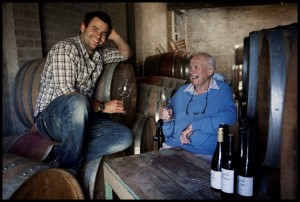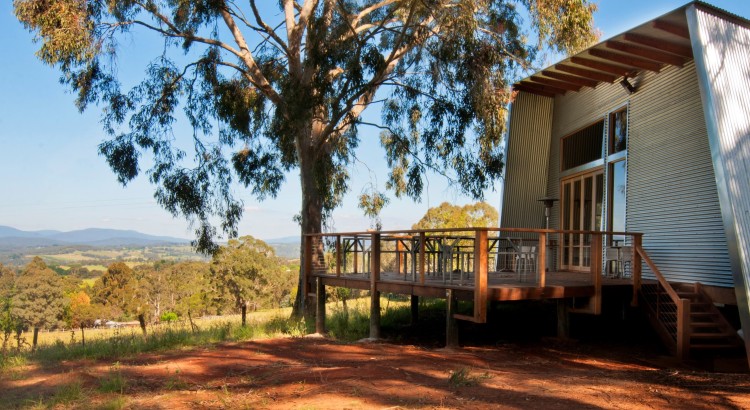
The Yarra Valley’s renaissance as a premium, cool climate producer in early 1970s owes much to the likes of Peter McMahon (Seville Estate), Bailey Carrodus (Yarra Yering) and John Middleton (Mount Mary).
About the same time as Max Lake founded Lakes Folly in the Hunter, the entrepreneurial Reg Eagan planted Wantirna Estate’s first vines and helped usher in a new generation of Yarra Valley vignerons. Some of whom made very un-Australian style wines and most of whom saw a future for pinot noir and chardonnay – both now famously synonymous with the Yarra Valley.
Though cool climate may have been a prerequisite in the mid to late 1960s, criteria like terroir and clonal selection were not nearly as top-of-mind as they are today; nor was viticultural expertise as readily accessible or of the quality as it is presently.
Indeed the self-effacing Peter McMahon’s choice of Seville Estate was driven as much by its picturesque location as it was by its viticultural potential. However that did not stop him making some exquisite pinot noir, of which the 1977 and 1980 stand out, some fine cabernet and a memorable chardonnay or two, especially the 1980.
Peter’s forte was crafting wines that, above all reflected the site and variety, a trait that has endured over four decades and continues to typify today’s Seville Estate vintages.
“Back in my grandfather’s day he and his contemporaries shared a certain innocence and were, to an extent, idolised by the wine media; now winemakers are much more scrutinised” says winemaker Dylan McMahon.
Like his grandfather Peter, Dylan prefers to let his wines do the talking. He is conscious of having a balance in life outside of wine and for him, his young family and surfing keep him sane. As does his music, a passion he shares with his contemporary Paul Bridgeman at Levantine Hill – Dylan plays base with the local Harvest Goon band while Paul is a Yeastie Boys band member.
Dylan is personable, open-minded and acutely aware that “there’s always more to be done as a wine maker, you never stop learning.” From Peter he inherited passion, creativity and a rigorous attention to detail, while from Iain Riggs, with whom he worked when the Van Der Meulen’s took over ownership from Brokenwood in 2005, he learned the pragmatic, business-side of the industry.
He vividly recalls Rob Hawkins, Iain’s compatriot at Brokenwood, saying “There’s not much point making wine unless you can sell it.” So it’s a matter of balancing the idealism and passion he inherited from Peter with the business nous he learned from Iain that is required to keep Seville Estate ahead of the game in today’s competitive market.
“As a small producer you cannot afford to make a bad wine” says Dylan, not that he has made many, apart from his 2012 attempt to replicate Peter’s stunningly eccentric, but magnificent, one-off, 1980 Trockenbeerenauslese Riesling.
“In 2012 four of us spent all day picking 62kg of botrytised berries and pressed them for 48 hours to get 18 litres. I fermented it in a glass demijohn and once I thought the ferment had stopped I added a lot of sulphur and pressed the bung down firmly – big mistake! A week later I walk into the cellar to find no demijohn but thousands of pieces of glass spread all over the cellar.”
Today visitors are more likely to hear some Alabama Shakes, Damien Jurado, or Radiohead tunes emanating from the winery rather than the sounds of popping glass.
Riesling and Radiohead aside, Dylan continues to do what Seville Eatate has always done well, namely to make wines that are true to variety, style and site – as exemplified by the 2004, 2008, 2011, 2013 and 2014 chardonnays – all of which show vintage conditions at their best, especially the fragrant, juicy 2014 vintage.
Add to these the 1980 chardonnay which I recall drinking on more than one occasion, though Seville Estate chardonnay was a bit more hit and miss back then, but when it was on-song it was exceptional.
“I opened a 1980 Chardonnay (my birth year) a few years ago for a historic tasting and it was really interesting; golden, slightly salty, oyster shells, fresh apricots and waxy; it had a lot going on for a wine I thought would be stuffed” says Dylan.
For Dylan, Yarra Valley Chardonnay is about purity and focus, with more emphasis on acidity than fruit.
As for Pinot, vintages like 2002, 2010, 2012 and 2013 (all from milder years with low crops) produced balanced wines which had great perfume and texture akin to some of those of the late 1970’s.
Not surprisingly Dylan thinks the essence of Yarra Valley Pinot Noir revolves around perfume and elegance. Seville Estate also make Shiraz well, none more so than the young 2013 with its abundant, ripe fruit, firm tannin and cedary oak.
As for cabernet sauvignon, Seville’s temperamental old vines are hard work, however excel in good years, though production is often limited to fewer than 100 cases which invariably sell quickly.
I recall some excellent dark, chocolaty cabernets of the late 1970’s which benefited from a bit of bottle age, with the pick of the crop among recent vintages being the Reserve Range 2012 Old Vine Cabernet.
Dylan thinks ‘it’s a typical Seville Cabernet with lots of spice, dark cherry/plum fruits, cassis, cigar box, earthy, with great tannin, a fantastic wine and a real sleeper.’
Dylan has put his own stamp on Seville Estate wines and like his grandfather Peter, has an engaging sense of humour, a propensity to cut though the bullshit and the ability not to take himself, or his wines, too seriously.
Likewise, Seville’s hands-on owners Graham and Margaret Van Der Meulen continue to work assiduously at improving both the vineyard, especially the soil’s biota, the winery and the Estate’s reputation.
Wisely they focus on doing what Seville Estate does best, that is making consistently fine vintages from the vines and varietals they inherited and have since enhanced. Even more wisely they see themselves as custodians of the McMahon legacy, of which Dylan plays an integral part.
As James Halliday said in 1985 “perhaps the greatest attribute of the Yarra Valley is its seeming ability to get the best out of virtually every variety vignerons have cared to plant.” This is as true today as it was 30 years ago and is an accurate summation of Seville Estate.
Etched in Dylan’s memory is something his grandfather often told him “at the end of the day wine is just a drink.”
Ah – but what a wonderful drink from a wonderful vineyard!
Originally published in Winestate Magazine 2015


